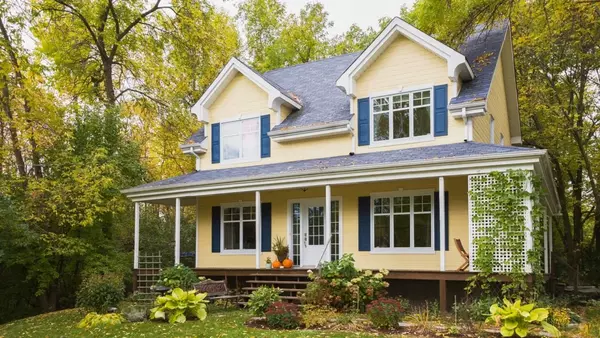How to Find an Apartment: 11 Ways to Beat the Hot Rental Market


Finding an apartment when everyone else seems to be looking for one, too, can test anyone’s optimism. Knowing how to find an apartment for rent quickly and with the least hassle can put you back in the positive zone so you can shift your energy from hunting for a home to moving into one. Below are 11 tips for how to get an edge on finding apartments, along with insights to help you gauge when your landlord or property manager might be open to negotiation.
1. Start your research ASAP — ideally at least four months before your move date
This may seem obvious, but it’s nonetheless important: As early as you can, make your wish list and begin looking at rental listings that meet your priorities. The sooner you start your search, the more time you have to readjust your expectations and hone in on the best fit. For example, you might discover that an in-building fitness center isn’t as important as you thought if it means you can save a little extra cash each month, or that you actually really do love living a 10-minute bike ride from work. The more you’re crunched for time and fiercely competing with other hopeful renters, there’s a higher chance you settle and have renter’s remorse.
2. Focus your apartment search about two months before your move date
Now that you have a sense of what’s realistic, it’s time to get serious. When looking at listings, pay special attention to apartments that become available in the first two weeks of the month because that is when you are likely to have the most to choose from. The end of the month is likely to be the most competitive. Keep your wish list and priorities top of mind. If budget is your primary concern, focus on neighborhoods that have the largest share of units in your price range. (We show you how to do that below.)
3. Be clear-sighted about your maximum rent
In times where both competition and rents are high (by May 2024, the typical U.S. monthly rent was $2,125), it can be tempting to stretch your budget in order to land your dream apartment. Being clear sighted about your maximum spend ahead of time can help ensure you’re not overexerting your wallet. Try our Rent Affordability Calculator to determine what monthly payment would comfortably fit in your budget. Experts say a home is generally considered affordable if it takes up no more than 30% of your monthly income. Don’t waste time and application money on apartments that will leave you with little cash for fun, savings and other expenses.
Tip: Zillow’s Local Legal Protections tool gives you information about local laws that protect renters from housing discrimination based on the source of income used to pay the rent, such as housing vouchers.
4. Set reasonable expectations for the locations you’re searching in
You don’t need to be an expert in economics to understand what typical rent should look like in your area or when conditions lend themselves to getting a better deal by negotiating. Use Zillow’s Rental Market Trends tool to see the number of available rentals and their price range in any given zip code or metro area. Search for rentals based on the number of bedrooms they have, and compare rents and availability in two different areas. The tool also will tell you the median rent in the area you’re searching.
5. Save time with a single application
Application fees can add up and prevent you from casting a wide net. Zillow gives renters the option of applying online to an unlimited number of participating rental properties for 30 days for a single $29 fee. The option doesn’t include every rental listed, only those properties that participate in the program. The application includes credit and background reports.
Tip: If your gut feeling is telling you that you’ve found “the one,” consider filling out an application online if the option exists before you tour in person. This shows the property manager you’re already a serious applicant when you visit the property.
6. Use filters and alerts
The Zillow app can alert you to new listings that match your home preferences in your preferred area. Use search filters to narrow your choices by price, home type, bed and bath preferences, pet requirements, laundry access and other amenities — and then save that search. Don’t forget to use floor plans and 3D tours to help refine your search and focus your in-person visits to apartments that have the most appeal for you. That way, you’re not waiting in line to tour a home with poor natural light, while the perfect townhouse around the corner is getting snapped up by someone else.
7. Let friends, co-workers and family know you’re looking for a place
The rental market is in a constant state of churn. The people in your networks may know of units opening in their buildings or know someone who is moving out. You could nab a place before it even hits the market. Get one step ahead of the competition over a listing, and consider posting in Facebook or Nextdoor groups for the neighborhoods you’re interested in to ask about any rentals coming on the market.
8. Consider negotiating lease terms and conditions
In a hot market, negotiating the terms and conditions of a lease might seem like a waste of time. It’s not. Property owners manage complex businesses. Finding stable, reliable tenants takes time and effort. If you fit the bill, you might consider the following:
Offer to sign a longer lease. If you plan to stay for two or three years, offer to sign a longer-term lease. You could stand out as an applicant while also locking in your rent for several years.
Offer flexibility. If you have the flexibility to move in quickly or on a timeline that is convenient for the landlord, mentioning that could also lead to a potential discount or give you a leg up in the screening process.
Ask about rent concessions. If lower rent is not an option, a landlord may be open to discussing other perks and amenities that can save you money. For instance, consider asking for lower pet or gym fees or free parking.
9. Search just outside your preferred area
If your market is super competitive, consider searching on the periphery of your preferred neighborhood to see if you can find a better deal while still being in proximity to your desired location.
10. Walk the neighborhood(s) where you want to live
Owners of small buildings sometimes hang “for rent” signs or post notices in local coffee shops to attract people already living in the neighborhood.
11. Stand out from the pack by being prepared
Landlords often use credit scores when qualifying potential tenants so make sure yours is in good shape. A few months before you move, consider checking your credit score with all three credit agencies, correct any errors and consider not racking up large amounts of credit debt or making a large purchase before you find a place. Line up references and collect paperwork that shows you have the income to pay the rent they’re asking. Pro tip: Use Zillow’s Renter Profile to introduce yourself to landlords and let them know what you’re looking for. Create a personal profile outlining your renter qualifications, such as a personal bio, employment, self-reported income and credit score, as well as your desired move-in date and lease duration. A profile allows you to stand out even with properties not accepting applications.
Recent Posts

Discover Luxurious Living in Hoschton: A Closer Look at 173 Tennessee Walker WAY

A Complete Guide to A Home Equity Line of Credit (HELOC)

Government Home Loans: Make Homeownership Possible

10 Tips for Organizing Your Whole House

What To Know About Smart Home Tech

8 Value-Adding Home Improvements You Can Do for $1,000 or Less

Health and Wellness Upgrades That Make Your Home Better

How to Find an Apartment: 11 Ways to Beat the Hot Rental Market

5 Things to Look for in a Rental Listing

6 Tips for Finding a Pet-Friendly Rental
